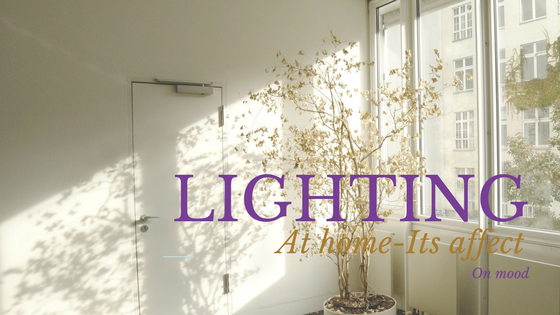How lighting can affect the way you paint your room
Mar 08, 2016 By Fenesta

Lighting can be inspiring. It can raise property value. And it can also shrink a room into a dungeon when done incorrectly. Painting a room is a great way to give it a fresh look. Make sure you get the look you want by considering how lighting affects your choices. We perceive color by the way wavelengths of light bounce off of it so, naturally, the colors we see are influenced by the type of light we are using to view them. This experience is very common. Consider grabbing two socks in the morning, which both look black, only to notice later at work that one is dark blue. The lighting is the only difference, not your eyes or any perceived fatigue. So when you're looking to choose a paint color for a room in your home, it's important to consider what kind of light it will receive. That light-whether it's natural light or artificial light will determine how you and your guests perceive the colors. First consider natural light. The sun's direction is very important. Light coming from the north is gentle and will leave all colors looking a little lighter, blue even. Light coming from the south is the most intense light, though; dark colors will be brightened and light colors will be washed out. Light from the west in the evening brings warm, orange tones. Light from the east, however, is yellowish. To determine how natural light will affect your chosen paint colors, get a sample of the paint and put it on the wall. View it at various times during the day. Or, if you use a room most often at a particular time of day, it will be most important to view the sample during that time to pick the best shade of color. Artificial lighting is something you can control in your home. Most homes have incandescent and halogen lights, but many are moving towards more energy efficient light-emitting diode (LED) or compact fluorescent (CFL) bulbs. It's important to consider the color temperature of these light sources the same way as with the natural light. Incandescent and halogen lamps, which are most familiar, provide a warm temperature, similar to that of a burning flame. Fluorescent lights, like those used in offices, tend to be on the cooler side, feeling more sterile and less home-like. LED and CFL lamps have had a bad reputation for having cooler light temperatures, but with recent innovations both of these types of lamps have made great progress towards matching the warmth of incandescent lamps, while being doubly or triply more efficient. You have these options for artificial light in your home, and the choices you make will influence how your paint is viewed. Examine the color swatches or samples you have in the various kinds of artificial lighting in your home to see the differences and determine which looks best to you. Don't forget to consider the finish of your paint. Flat, gloss, and semi-gloss all change the way that light is received and reflected by the paint. The glossier the finish, the more light that will reflect and the more distorted the appearance. Flat finishes don't bounce any light and, thus, are more true to color.










Comments